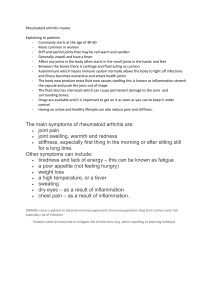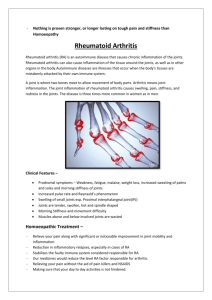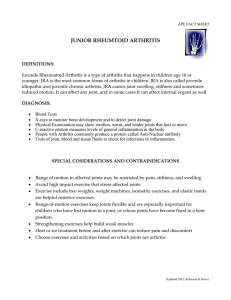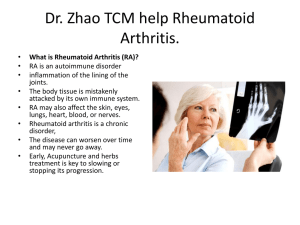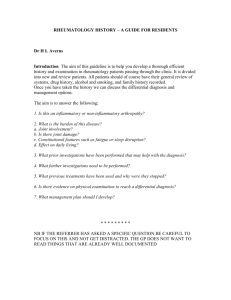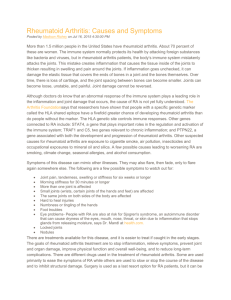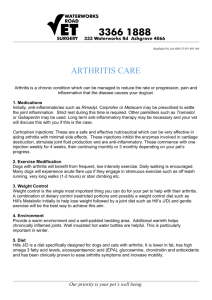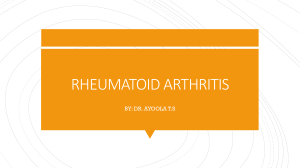Q&A July 2014 Rheumadtoid Arthritis
advertisement
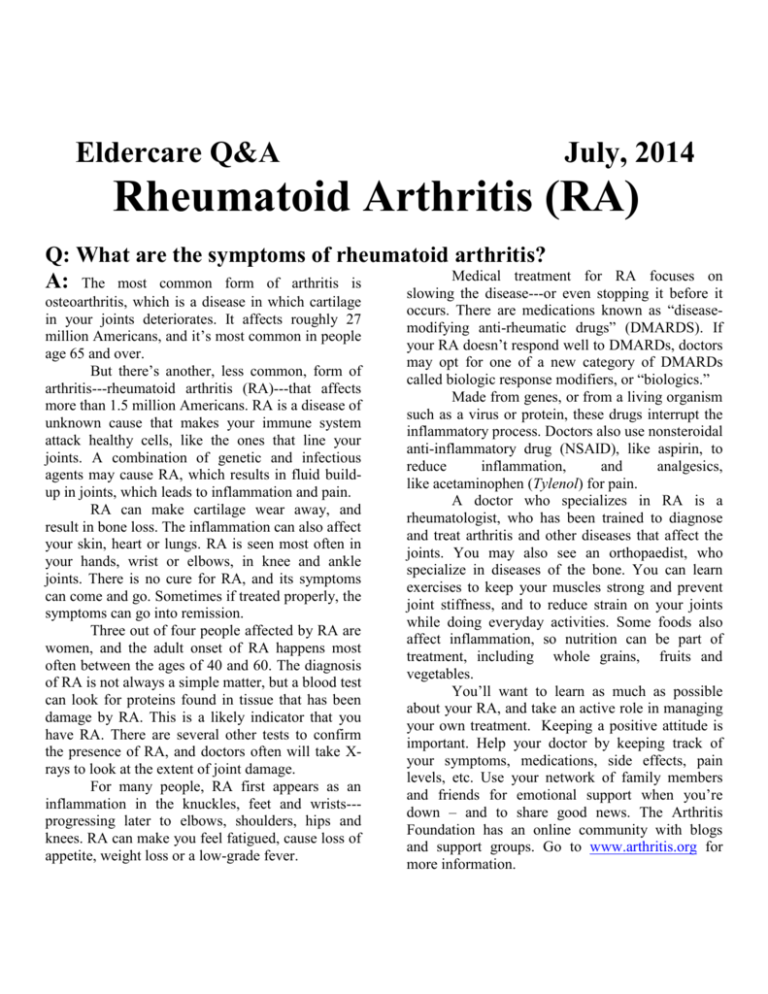
Eldercare Q&A July, 2014 Rheumatoid Arthritis (RA) Q: What are the symptoms of rheumatoid arthritis? Medical treatment for RA focuses on A: The most common form of arthritis is slowing the disease---or even stopping it before it osteoarthritis, which is a disease in which cartilage in your joints deteriorates. It affects roughly 27 million Americans, and it’s most common in people age 65 and over. But there’s another, less common, form of arthritis---rheumatoid arthritis (RA)---that affects more than 1.5 million Americans. RA is a disease of unknown cause that makes your immune system attack healthy cells, like the ones that line your joints. A combination of genetic and infectious agents may cause RA, which results in fluid buildup in joints, which leads to inflammation and pain. RA can make cartilage wear away, and result in bone loss. The inflammation can also affect your skin, heart or lungs. RA is seen most often in your hands, wrist or elbows, in knee and ankle joints. There is no cure for RA, and its symptoms can come and go. Sometimes if treated properly, the symptoms can go into remission. Three out of four people affected by RA are women, and the adult onset of RA happens most often between the ages of 40 and 60. The diagnosis of RA is not always a simple matter, but a blood test can look for proteins found in tissue that has been damage by RA. This is a likely indicator that you have RA. There are several other tests to confirm the presence of RA, and doctors often will take Xrays to look at the extent of joint damage. For many people, RA first appears as an inflammation in the knuckles, feet and wrists--progressing later to elbows, shoulders, hips and knees. RA can make you feel fatigued, cause loss of appetite, weight loss or a low-grade fever. occurs. There are medications known as “diseasemodifying anti-rheumatic drugs” (DMARDS). If your RA doesn’t respond well to DMARDs, doctors may opt for one of a new category of DMARDs called biologic response modifiers, or “biologics.” Made from genes, or from a living organism such as a virus or protein, these drugs interrupt the inflammatory process. Doctors also use nonsteroidal anti-inflammatory drug (NSAID), like aspirin, to reduce inflammation, and analgesics, like acetaminophen (Tylenol) for pain. A doctor who specializes in RA is a rheumatologist, who has been trained to diagnose and treat arthritis and other diseases that affect the joints. You may also see an orthopaedist, who specialize in diseases of the bone. You can learn exercises to keep your muscles strong and prevent joint stiffness, and to reduce strain on your joints while doing everyday activities. Some foods also affect inflammation, so nutrition can be part of treatment, including whole grains, fruits and vegetables. You’ll want to learn as much as possible about your RA, and take an active role in managing your own treatment. Keeping a positive attitude is important. Help your doctor by keeping track of your symptoms, medications, side effects, pain levels, etc. Use your network of family members and friends for emotional support when you’re down – and to share good news. The Arthritis Foundation has an online community with blogs and support groups. Go to www.arthritis.org for more information.
